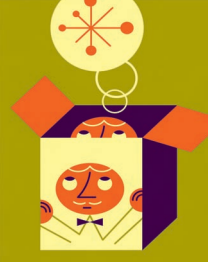Beyond the Big Firm
It’s hard to miss firm recruitment day at law school with normally jean-clad students decked out in suits. It is an exciting time for most students as they vie for positions at the best firms in the country.
But what about those looking for an alternative career path?
Alan Morrison sheds light on the lives of lawyers who have crafted a legal career in public service with his forthcoming book, Beyond the Big Firm. A senior lecturer in law at Stanford, Morrison conceived of the project to fill what he calls “an information void.” Co-edited with Diane Chin, the law school’s former Center for Public Service and Public Interest Law director, the book offers a glimpse into the lives of 30 lawyers, all with 10 to 15 years of experience working outside big firms. Ever wonder how a lawyer representing trade unions fills her day? Or what it means to practice environmental law with an advocacy group? Or what experience might lead to a Senate committee counsel position? This book attempts to answer those questions and more.
“Lawyers new to the field, and even some who aren’t new to practice, know very little about these other career choices and why lawyers working in this broad array of positions generally love what they do. I hope that this book, with its personal accounts, will help readers to understand the opportunities that exist,” says Morrison.
Morrison and Chin spent the better part of a year planning the book, first choosing 30 lawyers with a diverse range of practice focuses from different geographical areas and educational backgrounds. As they laid the groundwork for the project, 28 Stanford Law School students joined them to help with the heavy lifting. Most chapters were prepared by students, each of whom researched their subject, conducted the interview, and composed the profile.
“The styles are all different. But Aspen Press understood it was a necessary and interesting aspect of the book,” says Morrison.
Henry Huang ’07 took a detour from his summer plans to meet in Flagstaff, Arizona, with Sylvia Struss, who provides legal services and legal training to the people of the Navajo Nation. Huang is active in the Stanford Technology Law Review and plans to practice patent law when he graduates but was fascinated by Struss’s work and her involvement with the community.
“While this book wouldn’t change my career path, I’m sure it will have value. I found her work very interesting,” says Huang. “Participating in this project was, for me, a chance to hear about another aspect of law and to try a different kind of writing.”
Emily Rae Woods ’07 had a one-hour meeting scheduled with Ned Burke, a labor lawyer who represents union workers, at his Chicago office. Three hours later, they were still talking. “The biggest challenge in writing his profile was getting his passion about his job onto paper,” says Woods, who will clerk for Judge Harry Pregerson on the U.S. Court of Appeals for the Ninth Circuit after graduation. “For Burke, labor law is more than a job–it’s a movement.”
“Lisalyn Jacobs gave me so much information that I didn’t have writer’s block. I just wanted to do justice to her story,” says Laurel Parker ’07, who took time off from her summer job in the D.C. Public Defender’s Office to interview Jacobs ’90, vice president of government relations and policy at Legal Momentum. Parker will work for a large firm after graduation but is interested in criminal defense law.
“Learning about what she actually does on a day-to-day basis was fabulous,” adds Parker. “As a law student, you have a vague notion of what it means to practice in various areas of the profession. This book will offer practical and personal insight that I think will be invaluable.”

